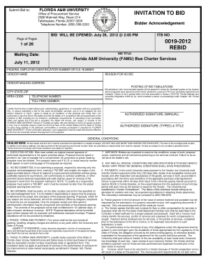
After Paul’s Guitar Shop prepares its closing entries, the income summary account has a balance equal to its net income for the year. This balance is then transferred to the retained earnings account in a journal entry like this. For the rest of the year, the income summary account maintains a zero balance. This way each accounting period starts with a zero balance in all the temporary accounts. If the balance on the final account is a loss (debit balance), companies have to credit the lost amount to the retained earnings.
If you have only done journal entries and adjusting journal entries, the answer is no. Let’s look at the trial balance we used in the Creating Financial Statements post. Think about some accounts that would be permanent accounts, like Cash and Notes Payable.
Whenever such a thing happens, the accounts in the income statement are debited, and accounts in the income summary are credited. The income summary account is a temporary account used to store income statement account balances, revenue and expense accounts, during the closing entry step of the accounting cycle. In other words, the income summary account is simply a placeholder for account balances at the end of the accounting period while closing entries are being made. The income summary account is a temporary account into which all income statement revenue and expense accounts are transferred at the end of an accounting period. The net amount transferred into the income summary account equals the net profit or net loss that the business incurred during the period.
From 1 January 2023, we adopted the IFRS 17 ‘Insurance Contracts’ accounting standard, which replaced IFRS 4. Given the current market consensus for global central bank rates, we’ve raised our 2023 full-year guidance for net interest income to above $35bn. While the interest rate outlook remains positive, we expect continued migration to term deposits as short-term interest rates rise. Our first-half results show we have built a good platform for growth while maintaining cost and balance sheet discipline. However, if the company also wanted to keep year-to-date information from month to month, a separate set of records could be kept as the company progresses through the remaining months in the year.
Pinnacle West Reports Lower 2023 Second-Quarter Financial Results – Yahoo Finance
Pinnacle West Reports Lower 2023 Second-Quarter Financial Results.
Posted: Thu, 03 Aug 2023 12:40:00 GMT [source]
It’s so automatic that you may not even see the income summary in the chart of accounts. This is a listing of accounts in your ledgers, which accounting programs use to aggregate information. Once you’ve made out the income statement, leasehold estate wikipedia drawing up the income summary is simple enough. Often confused with income statements, the two are very different and should not be interpreted as being the other. The key similarity is that they both report total nets and losses.
High-Income Taxpayers Paid the Majority of Federal Income Taxes
Then the income summary account is zeroed out and transfers its balance to the retained earnings (for corporations) or capital accounts (for partnerships). This transfers the income or loss from an income statement account to a balance sheet account. The account for expenses would always have debit balances at the closing of the accounting period.
Teens with a summer job can capitalize on the ‘greatest money-making asset,’ says expert. Here’s how – CNBC
Teens with a summer job can capitalize on the ‘greatest money-making asset,’ says expert. Here’s how.
Posted: Tue, 11 Jul 2023 07:00:00 GMT [source]
Thus, shifting revenue out of the income statement means debiting the revenue account for the total amount of revenue recorded in the period, and crediting the income summary account. At the end of a period, all the income and expense accounts transfer their balances to the income summary account. The income summary account holds these balances until final closing entries are made.
Why Use the Income Summary Account?
WSO provides its members with an Accounting Foundations course to master the necessary accounting skills.
- It is the end of the year, December 31, 2018, and you are reviewing your financials for the entire year.
- The income summary account then transfers the net balance of all the temporary accounts to retained earnings, which is a permanent account on the balance sheet.
- Permanent (real) accounts are accounts that transfer balances to the next period and include balance sheet accounts, such as assets, liabilities, and stockholders’ equity.
- However, there are a couple of significant differences between them.
To further clarify this concept, balances are closed to assure all revenues and expenses are recorded in the proper period and then start over the following period. The revenue and expense accounts should start at zero each period, because we are measuring how much revenue is earned and expenses incurred during the period. However, the cash balances, as well as the other balance sheet accounts, are carried over from the end of a current period to the beginning of the next period. When doing closing entries, try to remember why you are doing them and connect them to the financial statements.
1 Describe and Prepare Closing Entries for a Business
The income summary account is an intermediate point at which revenue and expense totals are accumulated before the resulting profit or loss passes through to the retained earnings account. However, it can provide a useful audit trail, showing how these aggregate amounts were passed through to retained earnings. If dividends were not declared, closing entries would cease at this point. If dividends are declared, to get a zero balance in the Dividends account, the entry will show a credit to Dividends and a debit to Retained Earnings.
The balances in each of the temporary accounts would then be closed out in either capital account as applied for sole proprietorship business and retained earnings as applied for the corporation. The professionals should not be confused with the income statement, and income summary account as both of the concepts rely on the reports of income and losses earned and incurred by the business. The income statement generally comprises permanent accounts and displays the business’s income earned and expenses incurred by the business. The income summary is a summarization and compilation of temporary accounts of the revenues and expenses. The information from the income statement can be transferred to the income summary statement to establish whether a business made a profit or loss.

Scholarship payments and life insurance benefits may be taxable, in certain situations. The balance in Retained Earnings was $8,200 before completing the Statement of Retained Earnings. According to the statement, the balance in Retained Earnings should be $13,000. Harold Averkamp (CPA, MBA) has worked as a university accounting instructor, accountant, and consultant for more than 25 years.
Permanent Accounts
You must close each account; you cannot just do an entry to “expenses”. If the balances in the expense accounts are debits, how do you bring the balances to zero? The debit to income summary should agree to total expenses on the Income Statement.
- In the manual accounting system, the company uses the income summary account to close the income statement at the end of the period.
- Generally, the snapshot of income and business value determined using GAAP provides a picture of business income and value that is often closer to economic reality than the results of tax accounting.
- He has written for goldprice.org, shareguides.co.uk and upskilled.com.au.
- The information needed to prepare closing entries comes from the adjusted trial balance.
The 2019 filing season was the second filing season under the TCJA. The TCJA made many significant, but temporary, changes to the individual income tax code including lower tax rates, wider brackets, a larger standard deduction, and an expanded child tax credit. The net effect of all the changes was to lower tax burdens, on average, for taxpayers across all income levels. The bottom 50 percent of taxpayers (taxpayers with AGI below $44,269) faced an average income tax rate of 3.5 percent.
Therefore, starting the year with temporary accounts at zero balance is important. The share of income taxes paid by the bottom 50 percent of taxpayers changed little from 2017, when it was 3.11 percent, to 3.06 percent in 2019. The share of income taxes paid by the top 1 percent increased slightly from 38.47 percent in 2017 to 38.77 percent in 2019.
The Income Summary account has a credit balance of $10,240 (the revenue sum). The eighth step in the accounting cycle is preparing closing entries, which includes journalizing and posting the entries to the ledger. Permanent (real) accounts are accounts that transfer balances to the next period and include balance sheet accounts, such as assets, liabilities, and stockholders’ equity. These accounts will not be set back to zero at the beginning of the next period; they will keep their balances.

However, each temporary account can be reset thanks to closing entries and begin the next accounting period with a zero balance. Likewise, shifting expenses out of the income statement requires one to credit all of the expense accounts for the total amount of expenses recorded in the period, and debit the income summary account. This is the first step to take in using the income summary account. The statement of retained earnings shows the period-ending retained earnings after the closing entries have been posted.
Summary of the Latest Federal Income Tax Data, 2023 Update
After the accounts are closed, the income summary is then transferred to the capital account of the owner and then closed. The fourth entry requires Dividends to close to the Retained Earnings account. Remember from your past studies that dividends are not expenses, such as salaries paid to your employees or staff. Instead, declaring and paying dividends is a method utilized by corporations to return part of the profits generated by the company to the owners of the company—in this case, its shareholders. The income summary is a temporary account used to make closing entries. The income summary account is at a credit position of $27,000 so that means to close the account, we need to debit the income summary account of that amount with the balancing side going to retained earnings.
For our purposes, assume that we are closing the books at the end of each month unless otherwise noted. Interest paid on certain bonds issued by governmental entities is treated as tax-exempt income. Interest paid on federal bonds and Treasury securities is exempt from state and local taxation.
No comment yet, add your voice below!